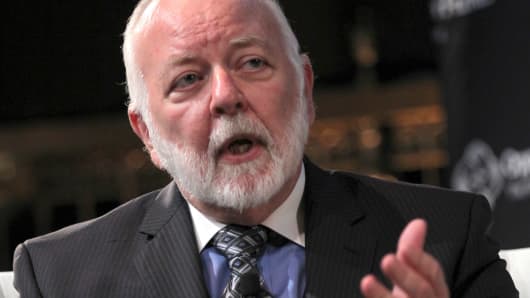Unfortunately, the comments being publicized by presidential candidates in both parties show a profound lack of understanding of the current position of banks and more disturbingly how the financial system itself works.
Here are four things they're getting wrong:
Big banks. It is often stated (by various candidates) that, since the passage of the Dodd-Frank Act, the biggest banks have gotten bigger.That's simply not true: In fact, the four biggest banks in the country have declined from having nearly 58 percent of the industry's assets in 2010, (when Dodd-Frank was passed) to nearly 52 percent in 2015 and they are likely to shrink even more rapidly in the next few years due to newly published regulations.
Small banks. It is being argued that small banks are failing at a faster rate since Dodd-Frank was passed. Also not true. From 1986, when the number of banks peaked in modern times, to just before the financial crisis, we were losing more than one bank a day to mergers and failures. We are still losing banks but at a pace well below the past.
The reason may be that the banks leaving the sector are operating with business models from the 1900s in the year 2015.
Risk. There is a fear that banks are still taking on too much risk, despite the hundreds of new regulations being put in place. This is the most outrageous untruth of all. Banks now have more cash as a percent of assets than any time in the past 25 to 30 years. They have more cash than common equity, according to the FDIC. Their loan portfolios have been dis aggregated so that no one class of loans is dominant as was the case in 2007.
Capital. Perhaps the biggest misunderstanding is the position of capital in the banking industry. Both sides of the political aisle and the regulators keep demanding more and more capital as protection for the banking system. Yet in the past five years, equity in the commercial-banking system has been consistently greater as a percent of assets than any time since 1938. In that 77-year period, the United States has not had one Depression or collapse of its banking system.
Yet in the late 1900s, both developments occurred with regularity, when the banking system, in theory, had more capital than today as a percent of assets. The economy and the banking system failed in 1873, 1883, 1893 and 1907.Some politicians are actually arguing that the banking system has less capital today than it had in 2010. This is simply a flat out misstatement.
Moreover, it was recently demonstrated that a number of politicians, and the media, did not realize that the Federal Reserve is no longer allowed to bail out banks. Further, it is not understood that the Fed now has a new system in place built around something called Living Wills. Under this system, every large bank in the country has provided a template to the regulators as to how to dismantle itself if it were to become insolvent.
The failure of the next president of the United States to understand the current position of the banks and the structure of the financial system could have dire consequences for the U.S. economy and job creation. This is because banking zealots keep putting more and more regulations in place,driven by politicians and media that are using false information to make their demands.
Here's one huge example of this "folly begets folly" approach to finance. In periods of minimal financial stress, it is normal for banks to deposit a relatively small amount of money at the Federal Reserve. In the five years leading up to 2007, the amount kept on deposit at the Fed averaged about $10.5 billion.
In the last five years, the amount held at the Fed was 163 times that amount, or $1.7 trillion. Currently there is $2.7 trillion in bank deposits at the Federal Reserve.
The reason that there is so much money there is banking regulations. More specifically, the Liquidity Coverage Ratio (LCR) requirements with its demand that banks hold a certain percent of their assets in what is now called High Quality Liquid Assets (HQLA) is the reason that the money is there. HQLA are Fed deposits and Treasury holdings.
Why should anyone care? Well, first of all,approximately one of every five dollars in the money supply of the United States (M-2) is sitting at the Fed — primarily invested in government bonds. Second, the money is invested in Treasury and not private debt,which means slower economic growth and fewer jobs.
So, here's what happens: Politicians who have no understanding of the financial system or how banking works make populist demands. Regulators put the demands in place because this is a democracy in last analysis. The banks follow the regulations and stop lending money to put the funds at the Fed.
The Fed buys government bonds. People do not get jobs. Not good.
Commentary by Richard X. Bove, an equity research analyst at Rafferty Capital Markets and the author of "Guardians of Prosperity: Why America Needs Big Banks" (2013).




